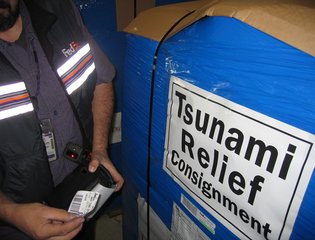Download full report
Summary
This paper aims to provide a clear summary of the evidence and perspectives to date around the issues of localisation and locally led action. Based on the learning gaps that emerged through the literature review and interviews, it also sets out a broad learning agenda around this topic.
Research around localisation/locally led humanitarian action proves particularly challenging since its interpretations change depending on where you are or with whom you are speaking. So, although significant attention and literature have been generated since the build-up to the 2016 World Humanitarian Summit, this has primarily focused on tracking progress against commitments towards localisation made by international actors. There is surprisingly little evidence on the relationship between locally led humanitarian action and performance on the ground.
Details:
- Publication language: English
- Pages: 43pp
- Suggested citation: Viswanathan, V (2023) Learning to be more ‘locally led’? Current practice and evidence gaps in the international humanitarian system. London:ODI/ALNAP
Recommendations
Key attributes of supporting locally led action
The most prominent attribute of locally led action that emerged through the scoping study is decentralised decision-making power – the ability for those closest to the affected communities to control how resources are used, how programmes are designed, and who is involved. Even the transfer of financial resources does not necessarily guarantee this designation of power; although some interviewees did cite ‘money leaving the INGO’s account and reaching that of the implementers’ as a basic fundamental of this approach.
Access to resources is another key attribute on the localisation to locally led spectrum. At the bare minimum, this includes quality funding; however, it goes beyond financial resources alone, to encompass skills, materials and operational abilities. There are also resources that exist within the ecosystems around affected communities, including local government, businesses, services and civil society. These strengths and networks need to be leveraged within the humanitarian response.
Shifting the lens towards locally led action also means questioning whether these changes can actually take place within the existing structures of the international system. Sub-contracting relationships have become so embedded in the sector that few frontline organisations have ever really experienced an equitable partnership.
The power imbalances are deep-seated, and the default (presumed right) ways of being and working continue to be dictated by the Global North. This includes broader issues such as how ‘local staff’ are treated, but also the ways meetings are conducted, the languages spoken, who yields when compromise is needed, and adherence to priorities that might not be relevant to the context at all. This is not an issue that is unique to the humanitarian system. To be a ‘good partner’ and to retain these relationships still – in many cases – means adhering to and meeting the standards of the North.


